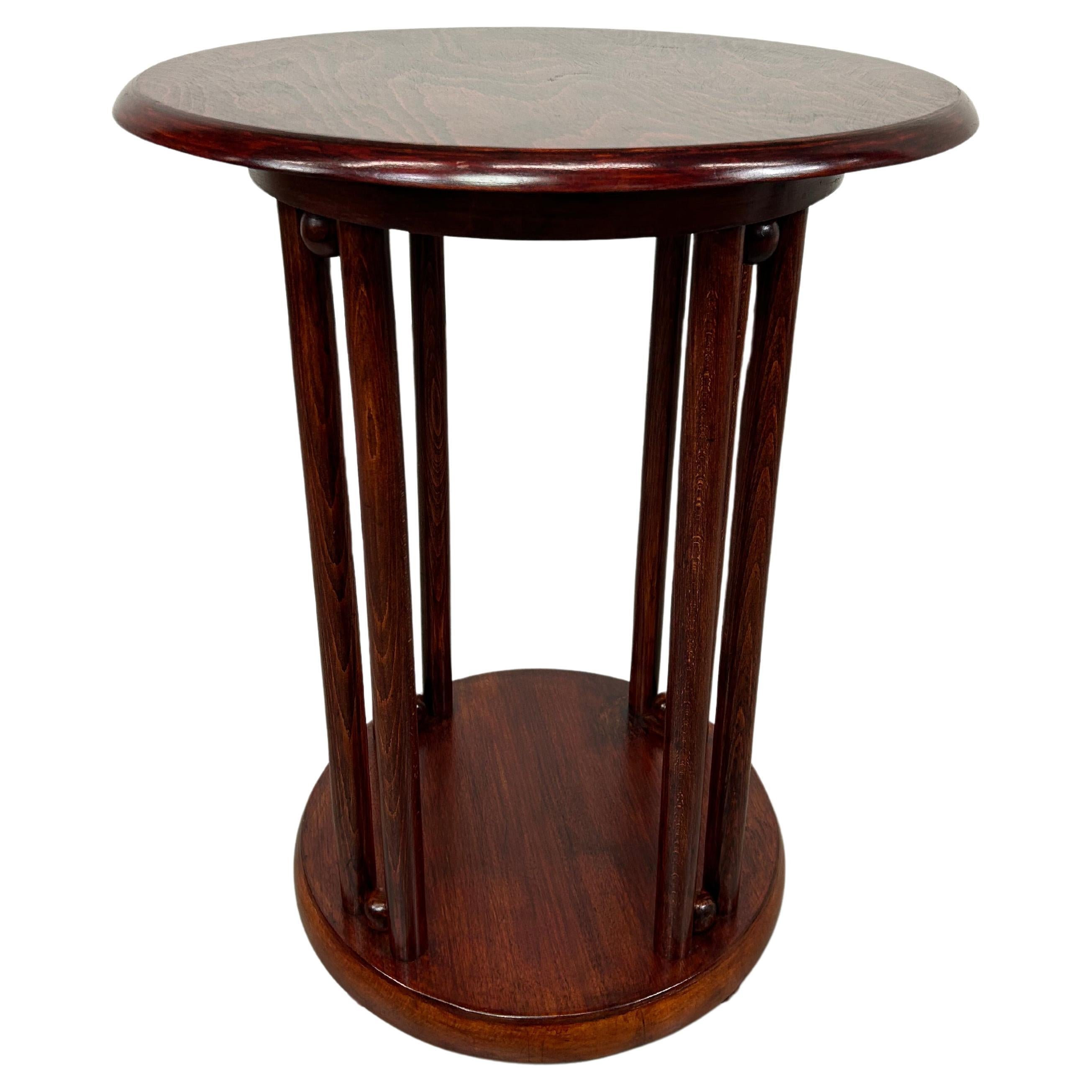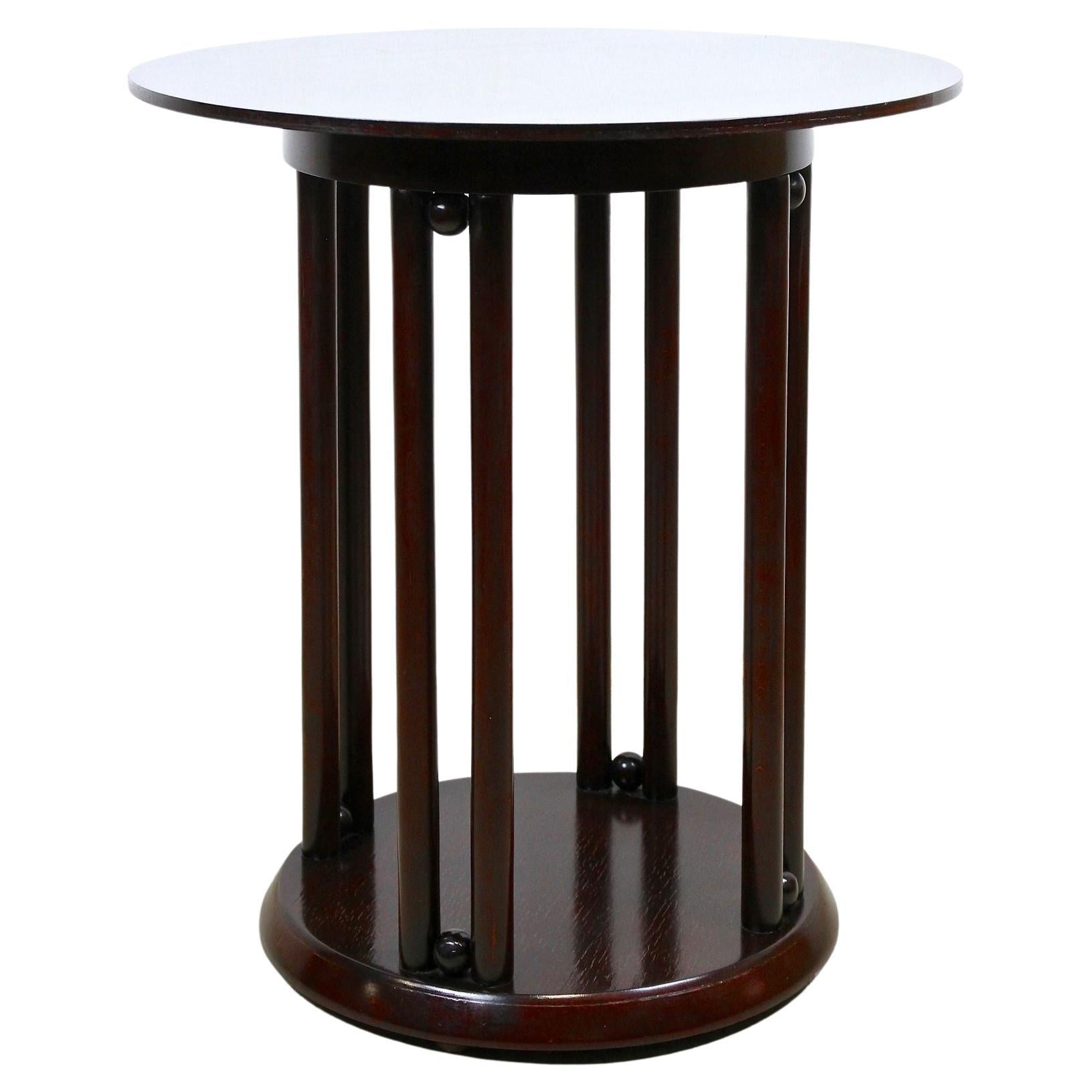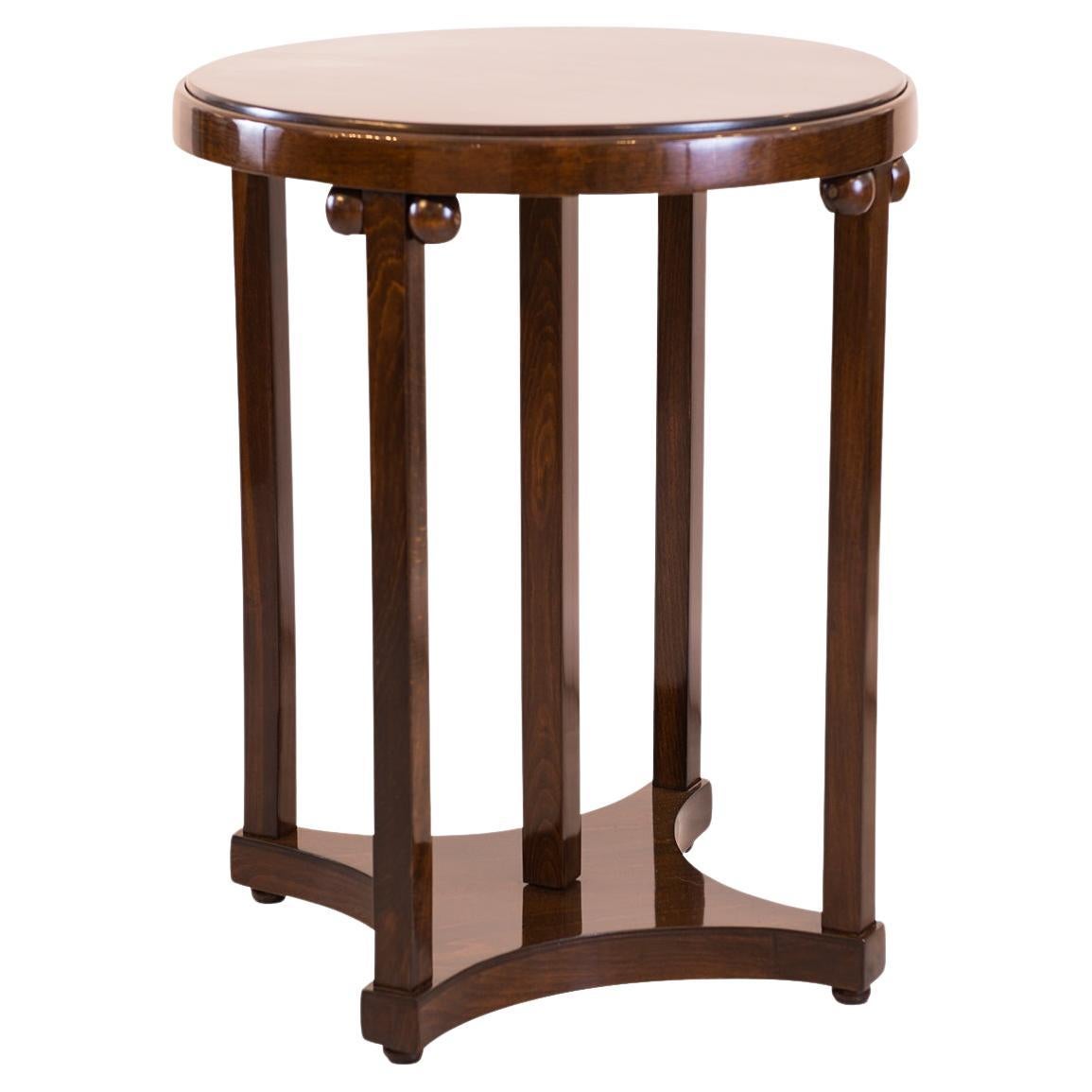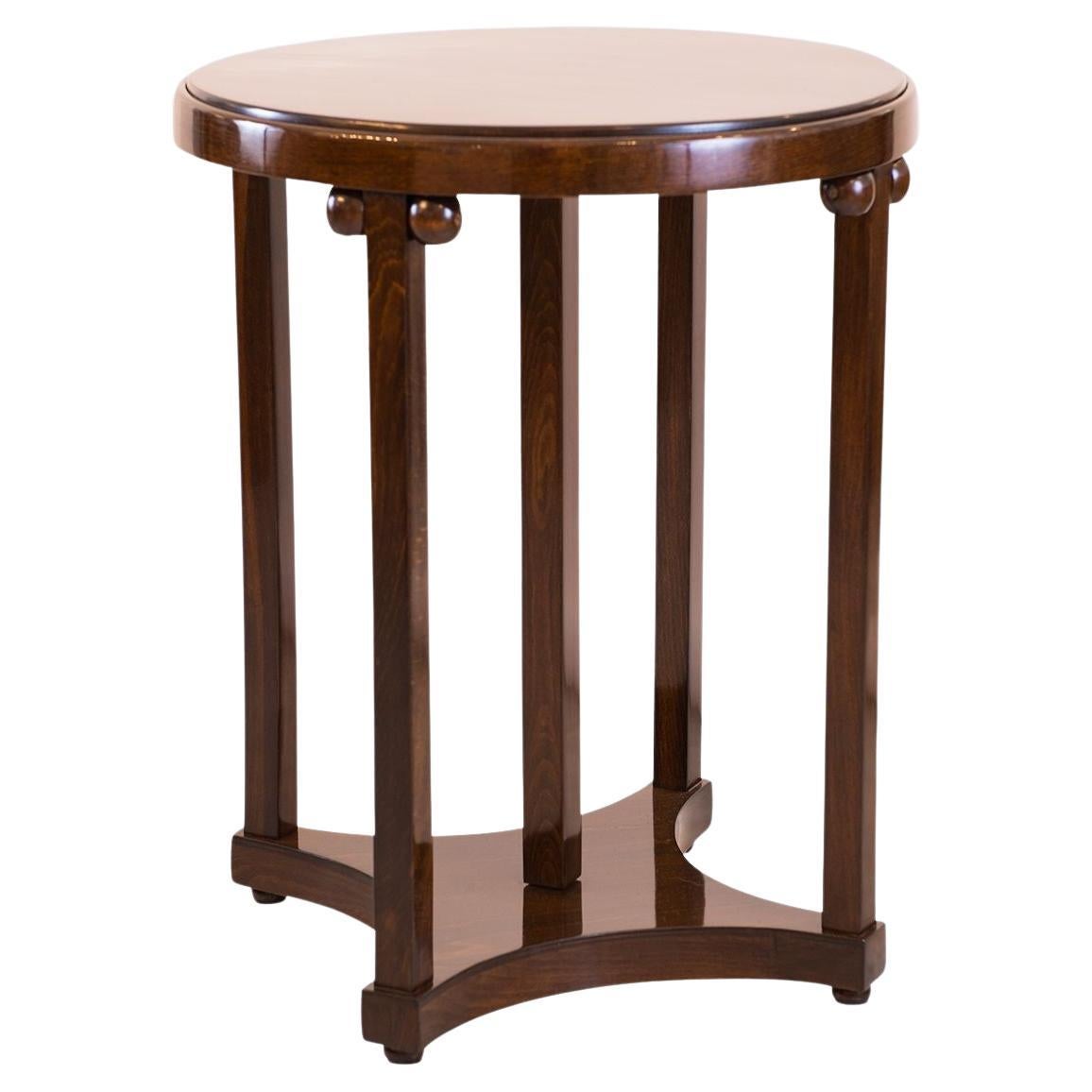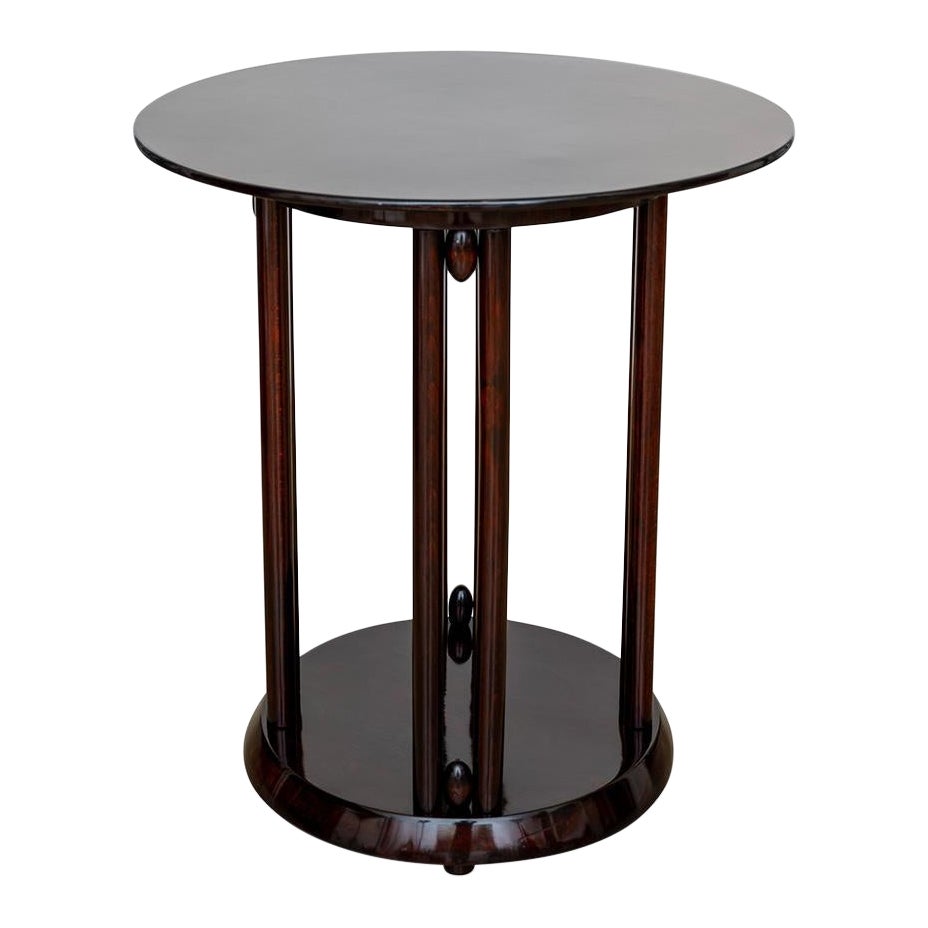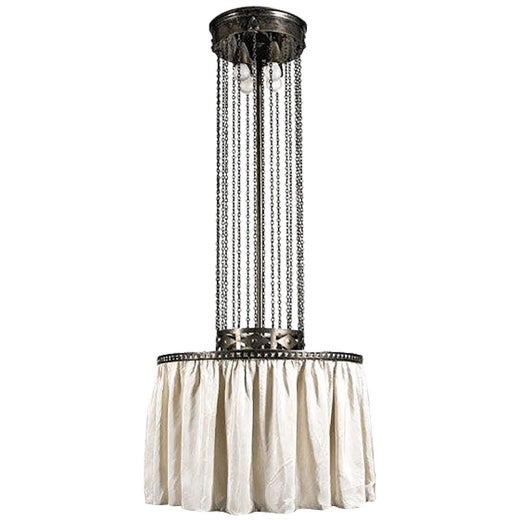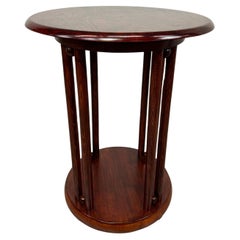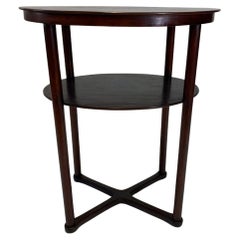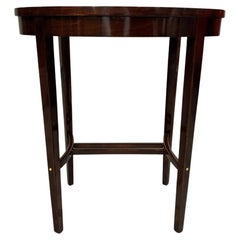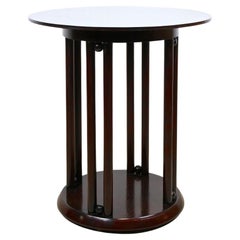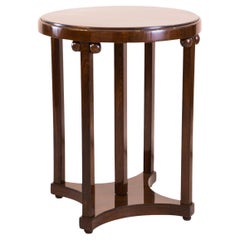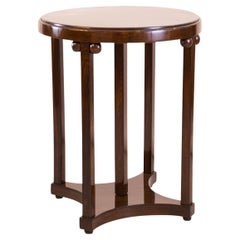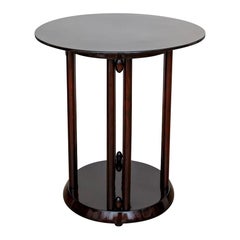Fledermaus coffee table by Josef Hoffmann for J&J Kohn
About the Item
- Creator:J & J Kohn & Mundus (Manufacturer),Josef Hoffmann (Designer)
- Dimensions:Height: 30.71 in (78 cm)Diameter: 23.23 in (59 cm)
- Style:Vienna Secession (Of the Period)
- Materials and Techniques:
- Place of Origin:
- Period:1900-1909
- Date of Manufacture:1907
- Condition:Refinished.
- Seller Location:Banská Štiavnica, SK
- Reference Number:1stDibs: LU6444241294782
Josef Hoffmann
The Austrian architect Josef Hoffmann was a central figure in the evolution of modern design, and a leader in an aesthetic movement born in Europe in the late 19th century that rejected florid, extravagant ornamentation in favor of a new emphasis on simplicity of line.
As a founder of the Vienna Secession — a union of artists and designers determined to upend Austria’s artistic conservatism — and later, a founder of the turn-of-the-century Wiener Werkstätte (in English: the Viennese Workshops), a design cooperative that produced superbly crafted furniture and housewares, Hoffmann was a pioneering practitioner of what would become a fundamental principle of modernism: that good design is a way of life.
Hoffmann came of age amidst a shift in the culture of the applied arts, as a conservative order that looked only to the past for inspiration was pushed aside. But what, exactly, would replace that order was in question — and Hoffmann’s career embodies the developing patterns of design’s new spirit. His architectural work reflects his time as a student of the Vienna architect Otto Wagner, who disdained excessive decoration and employed new materials such as steel girders and reinforced concrete to create buildings with airy, open interiors full of light.
As a designer of furniture and interiors, Hoffmann was consistently open-minded about the aesthetics he explored. He was an early adherent of the flowing, organic forms of the Art Nouveau design movement that began to flourish in the late 1880s — but by the opening of the Wiener Werkstätte in 1903, Hoffmann’s designs embraced the beauty of geometry in pieces that feature grids and angular forms.
Hoffmann’s greatest works reflect his ability to combine seemingly conflicting design visions into coherent wholes. His architectural masterpiece, the Stoclet Palace in Brussels, has an exterior that groups together simple geometric forms and spacious interiors marked by subtly naturalistic design details that lend rooms an air of charm and geniality.
Hoffmann’s signature furniture design is an adjustable lounge chair — the Sitzmaschine (1905) — that marries a curving frame with square and rectangular back- and side rests. This piece, like so many others by Hoffmann, reflects a groundbreaking, forward-thinking appreciation for the union of different looks and sources that marks the best of interior design in our own day. Moreover, items offered on 1stDibs — which range from enameled silver jewelry, to silver flower vase baskets and other decorative objects, to sofas, lighting pendants and sconces — testify to the astonishing breadth of Hoffman’s creative pursuits. He was truly a giant of design.
J & J Kohn & Mundus
While the first name that comes to mind when thinking of bentwood furniture might be Thonet (maker of the iconic Thonet No. 14 chair or “bistro chair”), Michael Thonet and his subsequent studio, the Gebrüder Thonet (Thonet Brothers), had a strong competitor in 19th-century Vienna: Jacob & Josef Kohn (also referred to as J. & J. Kohn). Mundus-Kohn was the name given to a short-lived company owing to an early 20th-century merger between J. & J. Kohn and Mundus, a Viennese firm that Rudolf Weill & Co.'s Leopold Pilzer founded in 1907.
Founded in 1849 by a father and son with the motto “Be one step ahead,” Jacob & Josef Kohn created modern furniture for indoors and out from Austrian beech. At the turn of the 20th century, after establishing itself with mastery of everything from chairs to coatracks and even doll furniture, J. & J. Kohn began working closely with the Wiener Werkstätte, the artisan cooperative cofounded by Austrian architect and designer Josef Hoffmann (Gustav Klimt and Koloman Moser were also members). Through this partnership, J. & J. Kohn produced an array of furniture in bentwood, cane and upholstery, which it sold through showrooms across Europe and North America. Its designs throughout the first decade of the 20th century reflect the Art Nouveau movement that was quickly gaining traction across Europe.
Price wars and mergers ensued during the First World War. Changes in the organizational structure of Thonet included a merger with Viennese company Mundus in the early 20th century, which followed Mundus’s becoming a majority stakeholder in J. & J. Kohn — these mergers yielded the formation of Mundus-Kohn and later, in 1922–23, Thonet-Mundus.
The new conglomerate went on to produce examples of its bentwood furniture in keeping with the modern style of the Vienna Secession. While Thonet rebuilt, rebranded and expanded in the United States and elsewhere after World War II, J. & J. Kohn never produced furniture under that name again.
Find antique Mundus-Kohn furniture on 1stDibs.
- ShippingRetrieving quote...Shipping from: Hronská Breznica, Slovakia
- Return Policy
More From This Seller
View AllAntique Early 1900s Austrian Vienna Secession Coffee and Cocktail Tables
Beech
Vintage 1910s Austrian Vienna Secession Coffee and Cocktail Tables
Beech
Vintage 1910s Austrian Vienna Secession Coffee and Cocktail Tables
Beech
Vintage 1910s Austrian Vienna Secession Coffee and Cocktail Tables
Beech
Vintage 1910s Austrian Vienna Secession Side Tables
Brass
Antique Early 1900s Austrian Vienna Secession Coffee and Cocktail Tables
Brass
You May Also Like
Early 20th Century Austrian Art Nouveau Coffee and Cocktail Tables
Beech
Early 20th Century Austrian Jugendstil Tables
Beech
Early 20th Century Austrian Jugendstil Tables
Beech
Vintage 1910s Austrian Jugendstil Side Tables
Beech, Bentwood
Vintage 1960s Austrian Modern Coffee and Cocktail Tables
Brass
Antique Early 1900s Austrian Jugendstil Tables
Bentwood
